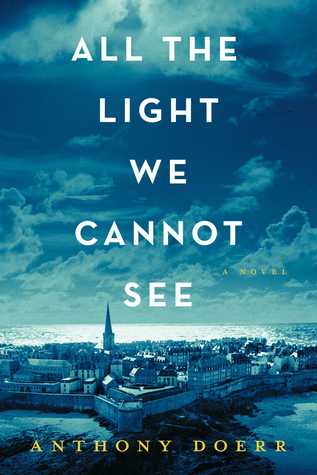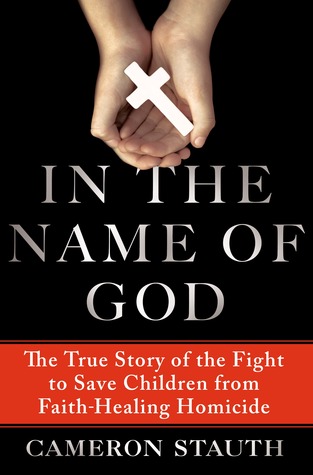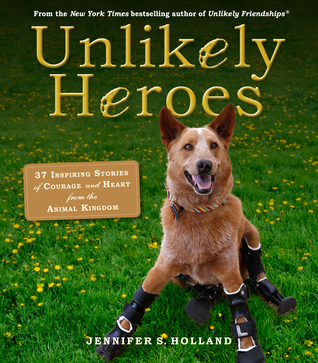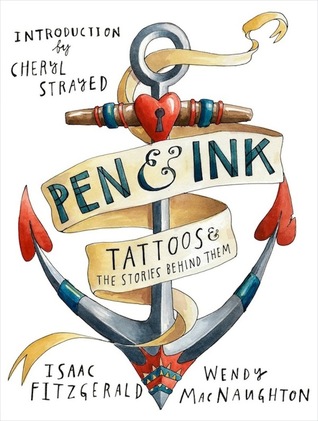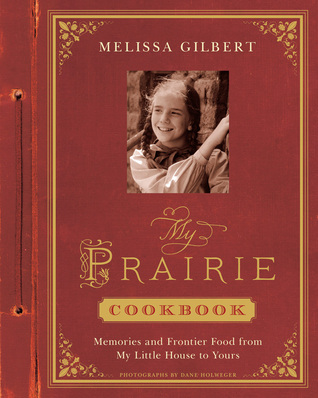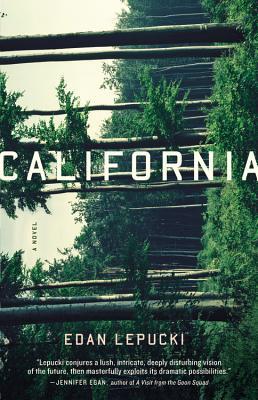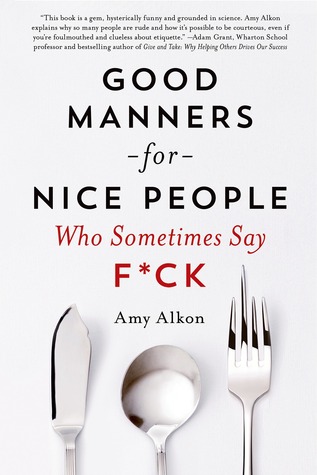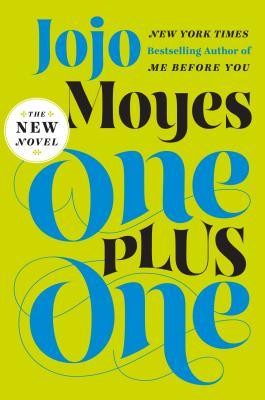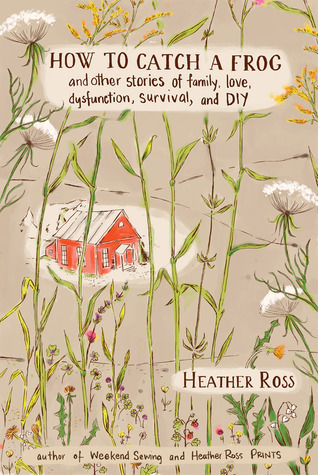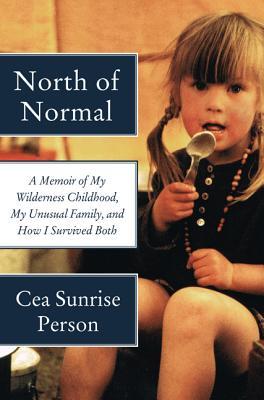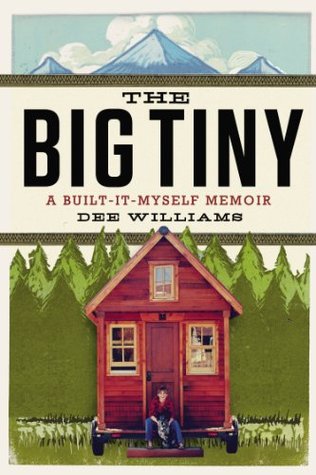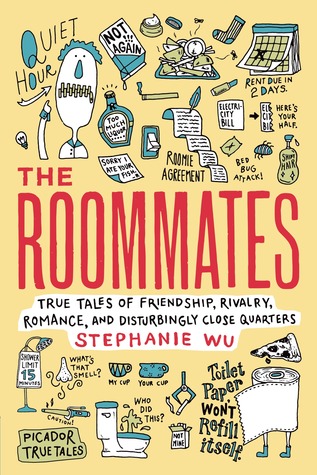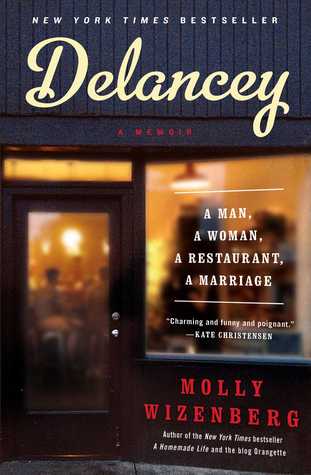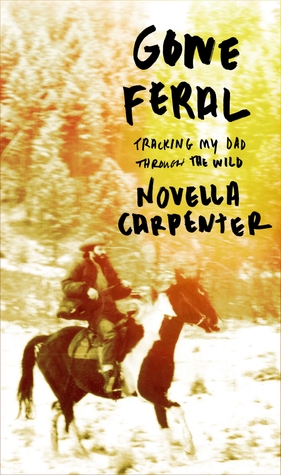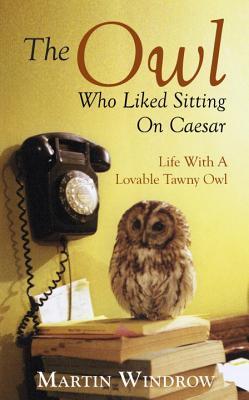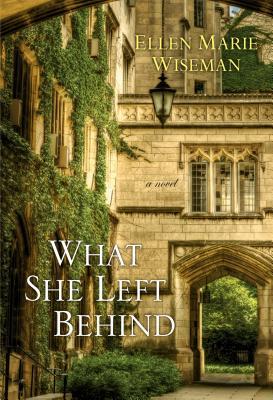
What She Left Behind by Ellen Marie Wiseman
This was an interesting book. The story goes back and forth between present day Isabelle, who is in foster care because her mother murdered her father when she was a child, and Clara, a woman put into a mental institution by her family when she fell in love with the "wrong" man. Isabelle's foster parents work for a museum and when they find suitcases from former mental patients at the Willard Hospital they start looking into some of their stories. They find Clara's trunk and after Isabelle reads her journal she realizes Clara was never crazy, just a woman who wanted to marry the man she loved not the man her parents arranged for her to marry. As Isabelle digs into Clara's story she begins to question why her own mother killed her father - she never read any of her mother's letters because she hated her for taking her father away and forcing her into foster care. As the two women's stories unfold, Isabelle realizes she has more in common with Clara and finds herself desperate to know what happened to her.
The beginning of the book was REALLY slow and in hindsight I wonder if all of the bullying Isabelle experienced was really helpful to the story - it was a major focus and then just drops off the radar. As the stories went on you definitely wanted to know what happened to Clara and her story shows the plight of many men and women who lived and died in horrific mental institutions who were NOT mentally ill. Without giving anything away the ending was pretty far fetched - a lot of things came together a little too well and very unlikely to have actually happened. I did want to find out what happened and you do pull for Isabelle and Clara, but not the best book I ever read. Good, but not great.
The beginning of the book was REALLY slow and in hindsight I wonder if all of the bullying Isabelle experienced was really helpful to the story - it was a major focus and then just drops off the radar. As the stories went on you definitely wanted to know what happened to Clara and her story shows the plight of many men and women who lived and died in horrific mental institutions who were NOT mentally ill. Without giving anything away the ending was pretty far fetched - a lot of things came together a little too well and very unlikely to have actually happened. I did want to find out what happened and you do pull for Isabelle and Clara, but not the best book I ever read. Good, but not great.

The Dinner by Herman Koch (Books & Banter book club)
Paul Lohman, his wife Claire, his brother Serge and his wife Babette meet for dinner at an upscale Holland restaurant. Both couples have fifteen year old sons and they've met for dinner to discuss something that affects both boys. The whole book follows this one meal, but throughout each chapter Paul looks back on other events that have happened that shape his relationship with his brother and with his family. Up until the half way point you think Paul is the more "normal" sibling, but then the story swiftly takes a turn as Paul shows his real self through a few increasingly horrifying memories. By the end of the book you don't really know what to think of either Lohman family. This was selected by one of my book clubs and it should make for a really good and interesting discussion. It's very different but it reminded me of Defending Jacob in that at a certain point you really see that a character is a sociopath with no conscience or moral fiber at all. Somehow Herman Koch creates an entire family of sociopaths and the results are unbelievable.
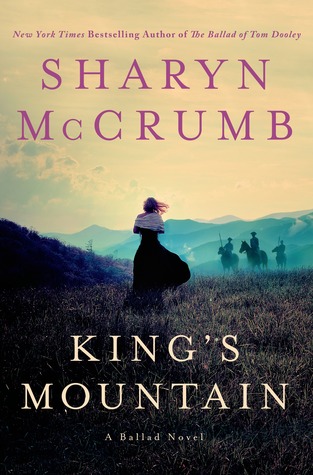
King's Mountain by Sharyn McCrumb (Evening Edition book club)
I was pleasantly surprised by this book. After reading the inside cover of the book it seemed like there would be a lot of characters to keep up with and it just didn't sound great, but it was really good. Based on the real Revolutionary War battle of King's Mountain, McCrumb does a great job of setting the scene for the battle and what drew these "over mountain men" into the war. A Scottish born British Army Major, Patrick Ferguson, is trying to make a name for himself in the Revolutionary war. He basically threatens the "over mountain men" militias that if they don't come to the King's side he will come to the mountains and destroy them. This moves the militia leaders to band together and go after Ferguson before he comes after them. The main character is John Sevier and his character is very likable and he's an obvious leader who does a great job with his men. I really liked how the book was laid out and how there was a lot of background given, but it wasn't overwhelming. I didn't know about this battle and it's fascinating that this was the "turning point" for the Revolutionary War that helped turn the tide against the British. Overall, it was a really interesting book and I thought the characters were really well written. There was also a lot of great dialog. My only complaint was that there was also a few sections of chapters from the perspective of Virginia Sal, a washerwoman who helped Ferguson, and Virginia Paul, who seemed to have a long history with Ferguson, but that was never made clear. It's kind of implied that Virginia Paul is a ghost or something, but her whole part in the book did not make any sense and could have been left out. Virginia Sal's sections were helpful and gave a voice to what was probably a large percentage of the population who didn't care which side won - they were just trying to survive either way. Overall, a really solid, interesting book.

Operation Christmas Child by Franklin Graham
I'm a big fan of Samaritan's Purse and the great relief work they do around the world. I've been participating in the Operation Christmas Child shoebox collection since 1997 or 98 and it's become one of my favorite holiday traditions. I look for things for our shoeboxes throughout the year so that I can get some really nice things to pack. This book walks through the history of OCC and how it continues to grow and change lives around the world. There are some real tear-jerker stories in here about the countless children who's lives have been touched by a simple shoebox of gifts. I was amazed at how many churches were started because of families and communities inspired to change their lives because of the OCC shoeboxes. There are also some really cool miraculous events that show just how much God's hand is on this organization and on these shoeboxes. One of my favorite stories from the book was at one shoebox distribution event they realized there were more kids than shoeboxes and they turned up 14 shoeboxes short. Then one of the distributors went back and was looking in the container and found an overlooked box with exactly 14 shoeboxes that were for the gender and age range of the kids who were waiting. If you're a fan of Samaritan's Purse and OCC then it's definitely worth reading this book. My only complaint was that I felt like the writing was a little choppy - the chapters are very short usually only a page or two. It was hard to get a feel for the overall history when it was written more like a collection of short clips of stories. There were lots of great and miraculous stories, but I didn't think it was written very well. I would still recommend it though.
Marie-Laure lives with her father in Paris where he works for the Museum of Natural History. When she is six she loses her sight and her father helps her learn her way around by building a scale model of their neighborhood. When the Nazis invade France they must flee to the countryside with a valuable artifact from the museum. They end up at her great-uncle's house where he's been a recluse since he fought in WWI. On the other side of the war Werner and his sister grow up in a German orphanage. Werner is brilliant with electronics and radios and quickly gains the attention of the academy for Hitler Youth. Werner quickly realizes that the academy is training the young Hitler Youth to be brutal, heartless killers and wants no part of it, but he knows once you're in there is no way out. Werner and Marie-Laure's stories come together in the small, walled seaside town of Saint-Malo. While their lives only briefly intersect the impact they have on each other is astounding and long-lasting. This is an incredibly beautiful book. The main character's stories are so compelling and you just can't put this book down because you can't wait to find out what happens to everyone. This novel shows the devastating affects of war, but also how beauty can still be found even in the midst of horror and devastation.
This was a pretty crazy book. When Natty Wainwright's younger daughter requires surgery while away on a school trip, she is relieved to know that it coincided with her friend Eve's visit from the US. Natty is glad that Eve is there to help her husband Sean and their older daughter Alice. She is only gone for 10 days, but when she gets back home her entire life is turned upside down. Eve has seduced Sean and he asks Natty for a divorce. She is devastated, but tries to keep it together for her daughters. Then she gets a note that says Eve has done this before - with dire results. Natty starts looking into her friend's history and is surprised to find that everything Eve told her was a lie. What she discovers is disturbing and Natty has to figure out how to outsmart Eve and get her family back. This is a fast-paced thriller that keeps you reading to find out what happens next. I liked that the story seemed realistic and everything didn't get neatly wrapped up at the end. Not quite as well written and disturbing as Gone Girl, but in the same vein. Definitely worth reading.
I really liked Into the Wild by Jon Krakauer which tells the story of Chris McCandless. So, I was really excited to read this book by his sister Carine. In The Wild Truth Carine recounts her childhood with Chris in their incredibly abusive home. Her father kept two families for awhile and even tried to get both families to live together! Chris and Carine were born while their father was still married to his first wife. They had an unbelievably dysfunctional childhood and after reading this there should be no surprise why Chris chose to get as far away from his parents as possible. Carine had a pretty tumultuous young adulthood because she left her parents home the minute she turned 18. She had 3 failed marriages and made lots of mistakes. But, in this book she owns all her mistakes and fully understands that her family caused dysfunction in her life too. I think it's great and amazing that she has such a close relationship with her other siblings from her father's first wife. Those kids could have hated her and Chris, but they saw that they were all in the same boat. Her siblings are what helped Carine get through her hardest times - just like Chris did when they were growing up. You can feel her love for him through the pages of this book. Once she realized that trying to protect her family by minimizing the abuse and the real reasons why Chris left was actually hurting Chris's memory, she decided to write this book to clear things up. It makes you wonder what Chris would have been like if he had made it out of Alaska, of course if he had we would never know since his death is what led to these books. This is really a beautiful tribute to the love between siblings.
All the Light We Cannot See by Anthony DoerrMarie-Laure lives with her father in Paris where he works for the Museum of Natural History. When she is six she loses her sight and her father helps her learn her way around by building a scale model of their neighborhood. When the Nazis invade France they must flee to the countryside with a valuable artifact from the museum. They end up at her great-uncle's house where he's been a recluse since he fought in WWI. On the other side of the war Werner and his sister grow up in a German orphanage. Werner is brilliant with electronics and radios and quickly gains the attention of the academy for Hitler Youth. Werner quickly realizes that the academy is training the young Hitler Youth to be brutal, heartless killers and wants no part of it, but he knows once you're in there is no way out. Werner and Marie-Laure's stories come together in the small, walled seaside town of Saint-Malo. While their lives only briefly intersect the impact they have on each other is astounding and long-lasting. This is an incredibly beautiful book. The main character's stories are so compelling and you just can't put this book down because you can't wait to find out what happens to everyone. This novel shows the devastating affects of war, but also how beauty can still be found even in the midst of horror and devastation.
Keep Your Friends Close by Paula DalyThis was a pretty crazy book. When Natty Wainwright's younger daughter requires surgery while away on a school trip, she is relieved to know that it coincided with her friend Eve's visit from the US. Natty is glad that Eve is there to help her husband Sean and their older daughter Alice. She is only gone for 10 days, but when she gets back home her entire life is turned upside down. Eve has seduced Sean and he asks Natty for a divorce. She is devastated, but tries to keep it together for her daughters. Then she gets a note that says Eve has done this before - with dire results. Natty starts looking into her friend's history and is surprised to find that everything Eve told her was a lie. What she discovers is disturbing and Natty has to figure out how to outsmart Eve and get her family back. This is a fast-paced thriller that keeps you reading to find out what happens next. I liked that the story seemed realistic and everything didn't get neatly wrapped up at the end. Not quite as well written and disturbing as Gone Girl, but in the same vein. Definitely worth reading.
The Wild Truth by Carine McCandlessI really liked Into the Wild by Jon Krakauer which tells the story of Chris McCandless. So, I was really excited to read this book by his sister Carine. In The Wild Truth Carine recounts her childhood with Chris in their incredibly abusive home. Her father kept two families for awhile and even tried to get both families to live together! Chris and Carine were born while their father was still married to his first wife. They had an unbelievably dysfunctional childhood and after reading this there should be no surprise why Chris chose to get as far away from his parents as possible. Carine had a pretty tumultuous young adulthood because she left her parents home the minute she turned 18. She had 3 failed marriages and made lots of mistakes. But, in this book she owns all her mistakes and fully understands that her family caused dysfunction in her life too. I think it's great and amazing that she has such a close relationship with her other siblings from her father's first wife. Those kids could have hated her and Chris, but they saw that they were all in the same boat. Her siblings are what helped Carine get through her hardest times - just like Chris did when they were growing up. You can feel her love for him through the pages of this book. Once she realized that trying to protect her family by minimizing the abuse and the real reasons why Chris left was actually hurting Chris's memory, she decided to write this book to clear things up. It makes you wonder what Chris would have been like if he had made it out of Alaska, of course if he had we would never know since his death is what led to these books. This is really a beautiful tribute to the love between siblings.
